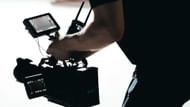Netflix's documentary My Father, the BTK Killer revisits the crimes of Dennis Rader, also known as the BTK Killer. He has been serving 10 consecutive life sentences since 2005 at the El Dorado Correctional Facility in Butler County, Kansas, as per Entertainment Weekly. Now 80 years old, he remains imprisoned there, with no possibility of parole for 175 years.
Rader's offenses took place between 1974 and 1991, when he killed 10 victims in the Wichita area. He got his nickname from his modus operandi: binding victims with ropes or cords, torturing them through extended strangulation, and killing them through hanging, suffocation, or stabbing.
A church council president and family man by day, Rader preyed on women and families, burgled houses, posed corpses for photographs, and gathered trophies such as pantyhose and driver's licenses. His taunting of police, letters, and poems to the media, and packages kept residents in fear for decades.
The new documentary film My Father, the BTK Killer, helmed by Skye Borgman, was released on October 10, 2025. The documentary tells the story of Dennis Rader through the personal perspective of his daughter, Kerri Rawson. It is streaming exclusively on Netflix globally.
My Father, the BTK Killer: The path to capturing the BTK Killer

Rader’s arrest in 2005 came after a 13-year pause in his killings, during which he focused on family and community roles. In 2004, he broke his silence by mailing a letter to the Wichita Eagle newspaper, claiming responsibility for the murders and including photocopies of the victims’ driver’s licenses, as per People. This sparked renewed media coverage and a revival of the task force.
Over the next months, he escalated with more packages: one to a TV station contained a doll bound with tape, symbolizing his methods, and another with a purple cloth from a victim. The turning point was a floppy disk sent in to KAKE-TV in 2004, asking if it could be traced.
Police, in a fake advertisement, assured him it could not be traced, prompting him to send it. Forensic analysis revealed deleted files with the names "Christ Lutheran Church" and "Dennis," which tied them to his role as council president, according to Entertainment Weekly.
Familial DNA testing sealed the case. Semen from early crime scenes matched Rader’s profile, confirmed by DNA from his daughter Kerri Rawson’s pap smear, submitted voluntarily after suspicions arose, as per the outlet. On February 25, 2005, police arrested him in his parked truck after a routine stop.
During interrogation, Rader confessed in detail, sketching crime scenes and explaining the code names for each of his hunts. He admitted to stalking and killing 10 of his targets, according to Entertainment Weekly. This ended a manhunt that began in 1974 with the Otero family killings, where four members died in their home.
The documentary My Father, the BTK Killer includes footage of the arrest’s aftermath, showing how it shattered his family’s normalcy. Rawson recalls police arriving at her door, informing her of her father’s identity.
Also read: What is Netflix’s Untamed all about? Everything you need to know before you tune in
Courtroom revelations in My Father, the BTK Killer: Pleading guilty to 10 counts

Rader’s trial unfolded quickly after his arrest, with a plea hearing on June 27, 2005, in Sedgwick County District Court, Wichita. Facing capital murder charges, he entered guilty pleas to all 10 counts, sparing the state a full trial but requiring a sentencing phase. Over nine hours, the judge ordered Rader to describe each crime in his own words.
Speaking from a table, not the witness stand, Rader detailed the 1974 Otero massacre, the 1977 stranglings of Shirley Vian and Nancy Fox, and later attacks up to 1991. He spoke clinically, using terms like hitchhiker for victims and explaining partial strangulations for control. Victims’ families attended, hearing graphic accounts of bindings, poses, and trophies, according to CBS News.
Prosecutors sought the death penalty, presenting evidence like letters and photos Rader took of bodies. Defense argued that he was compliant and remorseful, although he showed little emotion. On August 18, 2005, Judge Gregory Waller sentenced him to 10 consecutive life terms, the maximum sentence allowed under Kansas law at the time, with a combined minimum term of 175 years, as reported by LAist/NPR.
Rader addressed the court, apologizing briefly but focusing on his demons, as per CBS News. Families like the Oteros expressed relief, with survivor Charlie Otero stating it brought closure. The hearing, covered live by the media, highlighted the era’s shift from death-row expansions.
My Father, the BTK Killer features court transcripts and Rawson’s reflections on watching videos of the proceedings years later, grappling with her father’s detached tone. This process confirmed no additional murders beyond the 10, though Rader hinted at a possible 11th, as per CBS News.
My Father, the BTK Killer: Routine and restrictions, and Rader’s prison existence

Rader is imprisoned at El Dorado Correctional Facility, a 1,510-inmate medium-to-maximum security prison 30 miles east of Wichita.
In a 2019 letter to the Daily Mail, he gave insights into his life in prison and how he spent his days.
"Have TV, radio, hot-pot, books, I can call people, have visitors, just live alone and can’t have contact with others outside my cell, unless handcuff, probably listed as ‘high profile'. Work on art, poetry, write a lot of letters, keep record and book on life, exercise when I can," Rader wrote.
He continued:
"Do call close friends, that’s nice to talk to others, and they come and visit me, send me nice letters and cards, or buy books for me to read, I call them my 'Cave Family.'"
As a high-profile inmate, Rader faces extra monitoring: mail screening and supervised quarterly visits limited to immediate family. He has corresponded with researchers and media but rarely speaks publicly. In 2014, he petitioned for a name change to avoid notoriety, which was denied by the courts.
Health-wise, at 80, he deals with age-related issues and receives standard medical care. My Father, the BTK Killer, touches on this isolation, with Rawson describing brief prison visits where her father seemed unchanged, polite but distant, according to Time.
Also read: BTK Killer case on Netflix's My Father, the BTK Killer - A detailed case overview
Family shadows: Rawson’s story in the spotlight

Kerri Rawson, Rader’s eldest daughter, born in 1978, grew up in Park City, Kansas, viewing her father as a devoted provider who coached her softball and built playgrounds.
The 2005 arrest upended this at age 26; FBI agents visited her home, revealing his identity, as per Time. In My Father, the BTK Killer, Rawson shares home videos of family barbecues juxtaposed with crime scene photos, illustrating the deception. that occurred
She cut contact with her father after the trial, focusing on her two children and career as a hairstylist before becoming an advocate for survivors. Rawson aided investigations by providing DNA in 2005, which matched scratches on the victims, including Vicki Wegerle, as per Entertainment Weekly.
Her 2021 memoir, A Serial Killer’s Daughter, details therapy and faith helping her process the trauma. The documentary shows her sifting through her father’s storage unit in 2023, where she finds floppy disks with hunting plans, according to Time. She advocates for victims’ families, speaking at conferences and supporting the use of genetic genealogy in cold cases.
Rader’s ex-wife, Paula, divorced him post-arrest and moved away; son Brian, a Park City police officer, maintains distance, as per People. The film explores generational effects, with Rawson noting odd childhood memories, such as her father’s absences, now explained as stalking trips. Victims’ relatives, like the Fox family, also appear, discussing forgiveness challenges.
My Father, the BTK Killer is available to stream on Netflix.
Also read: 5 chilling details about BTK Killer's brutal crimes as shown in My Father, the BTK Killer
7 Mind-Bending Shows and Movies You Need to Watch If You Liked watching Lazarus
